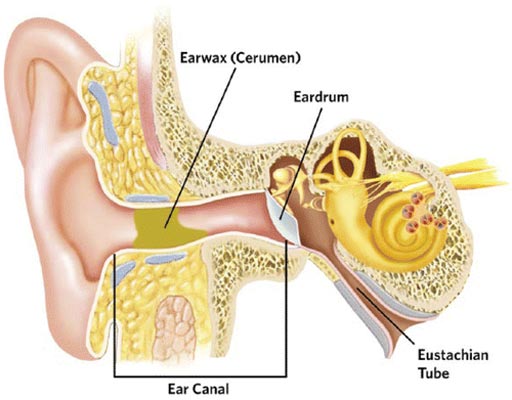Experts Update Clinical Practices Guideline for Earwax Impaction
By LabMedica International staff writers
Posted on 24 Jan 2017
An new guideline from the American Academy of Otolaryngology – Head and Neck Surgery Foundation provides updated evidence-based recommended practices for diagnosis and treatment of cerumen impaction as well as for patient education on healthy ear care.Posted on 24 Jan 2017
“This update is significant because it not only provides best practices for clinicians in managing cerumen impaction, it is a strong reminder to patients that ear health starts with them, and there are many things they should do as well as many things that they should stop doing immediately to prevent damage to their ears,” said Seth R. Schwartz, MD, MPH, chair of the guideline update group, “There is an inclination for people to want to clean their ears because they believe earwax is an indication of uncleanliness. This misinformation leads to unsafe ear health habits.”

Image: Impacted cerumen (green-yellow in diagram) can completely obstruct the ear canal (Photo courtesy of Schwartz SR et al / American Academy of Otolaryngology – Head and Neck Surgery Foundation).
Cerumen (earwax) is a normal substance that the body continually produces to self-clean, protect, and “oil” the ears to help keep them healthy. Dirt, dust, and other small matter stick to the earwax, which prevent them from getting farther into the ear. Chewing, jaw motion, and growing skin in the ear canal help to move old earwax from inside to the ear opening where it then flakes off or is washed off during bathing.
Under some circumstances this self-cleaning process may not work well and lead to a buildup of earwax such that it collects in and blocks, or partly block, the ear canal. Excessive or impacted cerumen is present in 1 in 10 children, 1 in 20 adults, and more than 1 in 3 of the geriatric and developmentally delayed populations. Impacted earwax can cause symptoms like ear itching, mild pain, feeling of fullness in the ear, ringing in the ear (tinnitus), hearing loss, discharge coming from the ear, odor coming from the ear, cough, and/or change in hearing aid function.
“Patients often think that they are preventing earwax from building up by cleaning out their ears with cotton swabs, paper clips, ear candles, or any number of unimaginable things that people put in their ears. The problem is that this effort to eliminate earwax is only creating further issues,” Dr. Schwartz said, “Anything that fits in the ear could cause serious harm to the ear drum and canal with the potential for temporary or even permanent damage.”
The primary purpose of the updated guideline is to help clinicians identify patients with cerumen impaction who may benefit from intervention. New evidence, systematic reviews, randomized control trials, observational studies, and an evolved methodology, which included a consumer representative, were at the foundation of the update. The update also provides a table of dos and don’ts for clinicians to help further educate patients.
“The update to the 2008 guidelines encompasses a variety of tools for clinicians in treating and communicating with their patients,” said Dr. Schwartz, “This includes an algorithm showing the interrelationship of key action statements in a cohesive and understandable way as well as enhanced information on patient education. Having the consumer perspective on the guideline update group provided us a value-added opportunity to incorporate more extensive patient counseling within our treatment protocols.”
The update is endorsed by American Academy of Family Physicians (AAFP), American Academy of Pediatrics (AAP), American Geriatric Society (AGS), American Neurotology Society (ANS), American Otological Society (AOS), American Society of Geriatric Otolaryngology (ASGO), and Society of Otorhinolaryngology and Head-Neck Nurses (SOHN). Additionally, it is supported by American Speech-Language-Hearing Association (ASHA).
The guideline, by Schwartz SR et al, was published as a supplement to the January 2017 issue of the journal Otolaryngology–Head and Neck Surgery.












